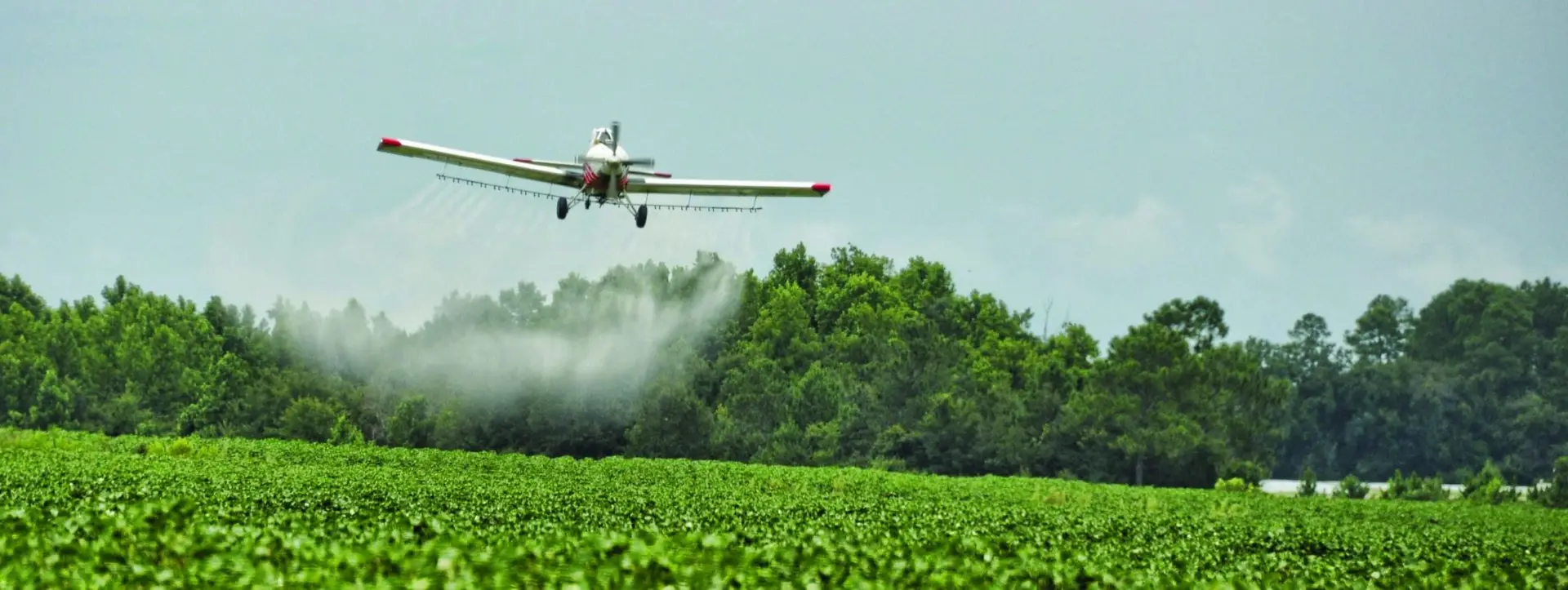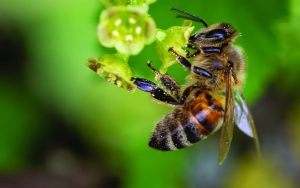The Hidden Costs of GMOs
LifeSource Natural Foods | Posted on |

Genetically modified organisms (GMOs), first introduced to agriculture in a major way in 1996, now cover at least 45% of US croplands. In the two decades since their introduction, many individuals and groups have raised concerns about the potential risks of consuming these bioengineered foods, none of which have gone through significant controlled safety testing. Precisely because of the lack of a serious scientific study of their impact on human health, however, discussions regarding the safety of GMOs are contentious at best. I wonder, though, if, in focusing on the potential risks of genetic modification per se, perhaps we are missing the bigger threat. Perhaps the greatest risk in genetically modified foods is not in how they were created, but in the purpose for which they were designed.
So what are GMOs designed to do? At present, every commercially-available genetically modified crop is designed to maximize profits for massive chemical companies, corporations like Bayer AG (which purchased Monsanto last year) Dow Chemical, and Syngenta. As for-profit entities, it’s hardly surprising that these companies have designed GMOs to increase their profits, but keep in mind that these are as much chemical companies as they are seed companies. They have designed their GMO seed to be profitable, yes, but they have also designed their seed to increase their profits on their other products: herbicides like Roundup, Liberty, and Enlist Duo.
GMO Crops and Herbicide Use
The first major GMO crops were Monsanto’s Roundup Ready line of soybeans, cotton, corn, and canola, and later alfalfa and sugar beets. These Roundup Ready crops are designed for herbicide resistance: a farmer can spray a field with Roundup, a blend of glyphosate and other chemicals, and kill all the weeds, but the Roundup Ready crop tolerates the herbicide and survives. While this originally led to a decrease in the total weight of herbicides being sprayed in the US – in 1996, Roundup Ready soy used 0.3 lbs/acre less herbicide than non-GMO soy – the huge amounts of Roundup in use quickly bred new “super weeds” that are also herbicide tolerant, weeds like pigweed, ryegrass, and marestail. In an effort to combat these new weed varieties, farmers often sprayed more Roundup, but that had no effect: by 2011, farmers were using 0.73 lbs/acre more herbicide than non-GMO soy. In addition to the Roundup, farmers now use other, more toxic, herbicides, such as 2,4-D and dicamba.
Today, many GMO crops have “stacked” traits that allow them tolerance to multiple herbicides at once. Dow’s Enlist crops, for example, are resistant to Dow’s Enlist herbicide, which contains both glyphosate and 2,4-D.
One of the fastest-growing products on the GMO seed market, though, is Monsanto/Bayer’s Xtend line of soybeans, designed to resist the herbicide dicamba. In just three years, Xtend soybeans have taken over 60-75% of the US soybean market. According to Bayer, 50 million acres were planted in Xtend soybeans in 2018. Xtend use may be growing so fast because of one of dicamba’s major characteristics, a characteristic prominently cited in an antitrust lawsuit against Monsanto: dicamba tends to dift. As Dan Charles recently reported for NPR’s Morning Edition, many soybean growers are switching to Xtend soybeans because they fear that dicamba drift from neighbor’s fields would kill any non-Xtend crops. In 2017, according to Kevin Bradley of the University of Missouri, at least 3.6 million acres of soybeans were damaged or destroyed by dicamba drift. The current lawsuit alleges that Monsanto is well aware of dicamba’s tendency to drift and is using that tendency to gain monopoly control over the soybean market. Of course, drifting dicamba not only kills or damages crops and weeds, but other species of plants as well, including trees and shrubs.
Built-in Insecticides
Besides herbicide-tolerant crops, there is one other major group of genetically modified crops: corn and cotton with a built-in insecticide commonly referred to as “Bt toxin.” The bacteria Bacillus thuringiensis (Bt) has been used to produce insecticides since the 1920s, but beginning in the late 1990s, agribusiness corporations began inserting genes from B. thuringiensis into crop plants so that they would produce their own insecticidal proteins. Today, millions of hectares are planted in genetically modified Bt corn and cotton. In many cases, the Bt traits are stacked alongside herbicide-tolerance traits.
Bt toxins are produced in every cell of a plant genetically modified with the trait. While there are different types of Bt proteins that more strongly affect specific insect “pests” such as the European corn borer and the corn rootworm, but like most insecticides, Bt toxins can also kill other species, including ladybugs and monarch butterflies.
Even as Bt crops cause this “collateral damage,” their usefulness in curbing pest species is rapidly declining. Just as the widespread use of glyphosate herbicides has bred “super weeds,” the near-ubiquity of Bt crops is breeding “super bugs” that survive eating the genetically modified plants. As these Bt-resistant insects spread, farmers are adding other insecticides to the mix, either in the form of sprays or, in the case of neonicotinoid insecticides, by treating the seeds so that the insecticide permeates the growing plant. One of the main justifications for Bt crops from the beginning was the assertion that they would reduce insecticide use. While the measures that companies used to demonstrate such a reduction were always suspect, it is now obvious that more, not less, insecticides are used than they were prior to the release of Bt crops.

Environmental Impacts
In examining the impacts of genetically modified crops, it is not enough to look at the crop in isolation. One must, instead, look at the crops’ roles in the entire agricultural system. Corporations have designed GMOs as part of their overall business strategies, which involve the sales of chemicals (herbicides and insecticides) and expanding their market share. GMOs are but a single component in an agricultural system that increasingly harms soils, ecosystems, and human communities.
Over the last decade, the eastern population of monarch butterflies has declined 90% over the last decade. Western monarchs – the population found here in Oregon – has declined 99% since the 1980s. Since I moved to Oregon over fifteen years ago, I have never seen a monarch. While there are likely multiple reasons for the decline, two major causes are the near eradication of milkweeds – monarch caterpillars’ only food – and poisoning by Bt crops. As early as 1999, researchers at Cornell University demonstrated that pollen from Bt corn kills monarch butterflies. And milkweeds are now essentially nonexistent over much of the monarchs’ range, due to increased spraying of glyphosate on GMO crops. The extinction of this iconic butterfly is now a very real possibility.
The monarch butterfly is only one species among many, but the story of the monarch is repeated across countless other insect species. A study published in Biological Conservation in January showed that over 40% of world insect species are declining precipitously and could be in danger of extinction. The most affected taxa are Lepidoptera (moths and butterflies), Hymenoptera (ants, wasps, and bees), and Coleoptera (dung beetles). The authors note that “A rethinking of current agricultural practices, in particular a serious reduction in pesticide usage and its substitution with more sustainable, ecologically-based practices, is urgently needed to slow or reverse current trends, allow the recovery of declining insect populations and safeguard the vital ecosystem services they provide.”

Robust insect populations are critical not just for their own sakes. They are an important source of food for many species of birds, bats, amphibians, and reptiles, and Hymenoptera and Lepidoptera in particular are major groups of pollinating insects. Without these species, many plants, including many of our crops, could be at risk.
Human populations are not immune from the effects of pesticides, either. Glyphosate, for example, is considered a probable carcinogen by the World Health Organization, and in February a team from the University of Washington concluded that glyphosate increases the risk of non-Hodgkin lymphoma and some other cancers by over 40%. Other studies show that glyphosate has a negative impact on healthy gut microbes, and may be a causative factor in the massive increase in celiac disease in recent decades. Last year, in a lawsuit against Monsanto (now owned by Bayer) by Dewayne Johnson, a former school groundskeeper diagnosed with terminal non-Hodgkin’s lymphoma, the court found that Monsanto’s glyphosate-based Roundup herbicide caused his cancer. He was ultimately awarded $78.5 million.
Other herbicides, including dicamba and 2,4-D (an ingredient in Agent Orange) may be at least as toxic as glyphosate. Herbicide-resistant GMO crops are designed to permit essentially unfettered spraying by these herbicides, and as a result their residues are common throughout our environment and our food.
Solutions
If we wish to improve our health and the health of our ecosystems, it’s time for us to look at our agricultural systems holistically. We need a radical redirection of national and global agricultural policy. Such a policy would encourage the use of non-chemical methods of pest and weed controls. It would offer significant incentives for preserving and restoring habitat in agricultural areas, such as restoring the hedgerows and buffer strips that were once common around fields. These habitat areas allow the proliferation of helpful species that eliminate the need for insecticides to begin with, with no reduction in crop yield (but a significant reduction in expenses for insecticidal chemicals). A holistic agricultural policy would depricate the use of massive monocrops (64% of Iowa’s land area is devoted exclusively to corn and soybeans, mostly GMO, for example) in favor of multiple-crop systems that help to build soil and break up and reduce pest populations.
Luckily, the basis for such a radical change to our agricultural policy is already in place: the USDA Organics Program (and aligned programs in Canada, Europe, Japan, and elsewhere) lays out the parameters for chemical-free agriculture. But the system needs to be scaled up dramatically, with agricultural subsidies redirected from commodities like corn, soy, and wheat to more varied, nutritionally-significant organic crops. With such systems in place, GMO crops could no longer exist in their current form, but more importantly, the health of farms, soils, waterways, and animal and plant populations would improve, as would our own.


Leave a Reply